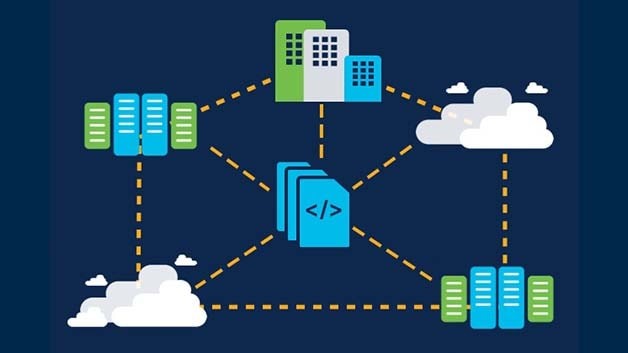Infrastructure as Code has become one of the most transformative practices in modern IT. By treating infrastructure configurations as software, organizations can automate deployments, enforce consistency, and scale systems with remarkable efficiency. This shift has reduced human error and accelerated innovation, but it has also introduced new risks. When infrastructure is defined and managed through code, mistakes can propagate quickly, vulnerabilities can be embedded in scripts, and disputes over ownership or responsibility can arise. The idea of insuring Infrastructure as Code may sound unconventional, yet it is increasingly relevant for businesses that depend on it to run critical operations.
The value of Infrastructure as Code lies in its ability to make infrastructure predictable and repeatable. A single script can spin up hundreds of servers, configure networks, and deploy applications across multiple environments. But this power also means that a small error in the code can have outsized consequences. A misconfigured firewall rule or an overlooked dependency can expose sensitive data or bring down entire systems. Insurance provides a safety net in these scenarios, ensuring that the financial and reputational impact of such incidents does not fall entirely on the organization.
Security is one of the most pressing concerns in this space. Infrastructure as Code often relies on templates, modules, and shared repositories, which can inadvertently introduce vulnerabilities. If a compromised script is deployed across environments, attackers may gain access to critical systems. Cyber liability insurance becomes essential here, covering the costs of breach response, regulatory fines, and reputational repair. While secure coding practices and audits are crucial, insurance ensures that when breaches occur, organizations have the resources to respond effectively.
Intellectual property issues also come into play. Infrastructure as Code often contains proprietary logic, unique configurations, or specialized automation that represent significant intellectual capital. Disputes over ownership or misuse of these assets can lead to costly legal battles. Intellectual property insurance provides protection in these scenarios, covering legal expenses and potential settlements. For startups and small teams, this coverage is particularly important, as they may lack the resources to defend their innovations without support.
Operational risks are another dimension worth considering. Infrastructure as Code is often embedded in automated workflows, meaning that if a script fails, the ripple effects can be significant. Business interruption insurance helps cover the costs associated with downtime, ensuring that lost productivity does not translate into lost revenue. For organizations that rely on continuous integration and deployment pipelines, this type of coverage can be the difference between a minor setback and a major financial loss.
The infrastructure supporting Infrastructure as Code also carries value. Teams rely on orchestration platforms, cloud services, and specialized hardware to run and maintain their automated deployments. Property insurance ensures that these assets are covered in the event of theft, damage, or accidents. While the code itself is digital, the ecosystem that supports it is very much physical and financial, and protecting it is part of a holistic approach to risk management.
Insuring Infrastructure as Code also enhances credibility with clients and partners. In industries where trust is paramount, demonstrating that you have taken steps to protect your automated infrastructure signals professionalism and accountability. It reassures stakeholders that you understand the business implications of automation and are prepared to handle challenges responsibly. This can strengthen relationships and serve as a differentiator when competing for contracts.
Cost is often the biggest concern when considering insurance for digital assets. Premiums vary depending on coverage levels and the scale of operations, but they are generally manageable compared to the potential losses from uncovered risks. Thinking of insurance as an investment rather than an expense helps reframe the decision. Just as Infrastructure as Code itself is a proactive measure to improve efficiency, insurance is a proactive measure to protect that efficiency from being undermined by unforeseen events.
As Infrastructure as Code continues to evolve, so too does the need for insurance. Scripts are increasingly used in complex workflows, integrating with microservices, machine learning models, and enterprise systems. This expands their value but also their vulnerability. Regularly reviewing insurance coverage ensures that it keeps pace with these changes, providing protection that is relevant to the current landscape. A static policy may not be sufficient when practices and technologies are constantly shifting.
It is important to recognize that insurance does not replace good practices; it complements them. Developers and administrators must continue to prioritize secure coding, monitoring, and clear documentation. Insurance provides the safety net when these measures are not enough, allowing teams to recover quickly and maintain focus on their core mission. In this way, insurance supports not only the business side of automation but also the creative freedom that drives innovation.
For organizations just beginning to adopt Infrastructure as Code, insurance may feel like an unnecessary step. Yet building protections early can save significant stress later. Even modest coverage can provide peace of mind and establish a foundation that grows with the team. As projects become more complex and client expectations rise, the importance of insurance becomes increasingly evident. It is a proactive measure that reflects maturity and foresight in business operations.
The broader lesson is that digital work carries real-world consequences. Infrastructure as Code guides decisions that affect system performance, security, and business outcomes. Insuring it acknowledges its importance and ensures that the value it represents is not lost to chance. In a business environment where digital assets are increasingly central, treating Infrastructure as Code as insurable property is both practical and forward-looking.
Ultimately, insurance for Infrastructure as Code is about recognizing its role as a cornerstone of modern digital infrastructure. It is about protecting the intellectual effort, strategic insight, and collaborative energy that go into shaping automated systems. By securing the right coverage, organizations can safeguard their work, strengthen client trust, and maintain resilience in the face of uncertainty. In doing so, they not only protect their code but also reinforce the professionalism and accountability that define successful enterprises in the digital age.





